This post is also available in: Italian
Cuneo is the 29th Italian province out of 110 total by population, the second by the number of municipalities (250) and the fourth by size (after Sassari, Bolzano and Foggia). For that reason, the locals have nicknamed it “la granda” (the “big one”).
Travelled over the centuries by pilgrims, armies, smugglers and artists, it’s surrounded to the west by the Cottian and Maritime Alps and to the south by the Ligurian Alps; it’s a land rich in history, luxuriant forests, rivers, valleys and mountains, natural parks, and different landscapes. Not to mention the rolling hills of the Langhe area and the Roero vineyards, its numberless ancient traditions, excellent food and wine, frequent art exhibitions and cultural events.
There are also several Romanesque, Gothic and Baroque architectural jewels, medieval villages, churches, monasteries, sanctuaries, noble abodes and castles – all evidence of the long-lived cultural wealth and exchange between Europe and the local realities.
Last but not least, this area is also rich in excellent nurseries, offering alpine flowers, the annual flowers of our tradition, collections of rosemary and chestnut trees, aquatic and marsh plants, exotic and local fruit species, and much more.
The nurseries
The map shows the nurseries and other locations included in our suggested itinerary. Distances are also mentioned, in order to make it easier and more practical for you to make your choice and save petrol and time.

Colla Nursery, in Moretta (CN): this company has always continued the family horticultural tradition, now also including the cultivation of aquatic plants, including lotus flowers, floating specimens, marsh varieties, iris barbata, and bamboos. In addition, Colla professionals design and build “bio-lakes” and “bio-pools”, offering educational activities and workshops for schools as well.
Distances to other nurseries: 16,6 miles to Jshandhoor Nursery – 32,3 miles to Alpi Vivai – 34 miles to Dennis Botanic Collection – 26,7 miles to ll Bolfone.
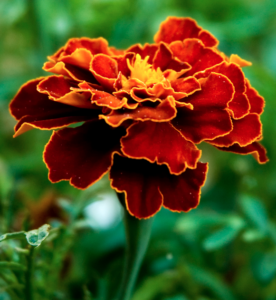
Jshandhoor Nursery, in Busca (CN): Jshandhoor is a small nursery opened by Susanna Aimone in 2004. Starting from seed or cutting, it grows several interesting flowers and plants with the aim of recovering old traditional varieties that are mostly forgotten, while also looking for unusual plants. The memories of the gardens of the past can thus be rediscovered, along with their secrets and irresistible fragrances. In details, there are several fascinating specimens of Ageratum, marigolds, zinnias, Californian poppies, morning glories, garden cosmos, snapdragons, garden nasturtium, spider flowers, wildflowers, sweet and perennial peas, and wild species. Then, there are perennial plants (scabiosa, rudbeckia, gaillardia, veronica, achillea, heuchera, alcea), collectable ivy, climbing roses (old and ancient varieties), as well as annual flower seedlings.
Distances to other nurseries: 16,7 miles to Alpi Vivai – 18,6 miles to Colla Nursery – 31,7 miles to Denis Botanic Collection – 28 miles to ll Bolfone.
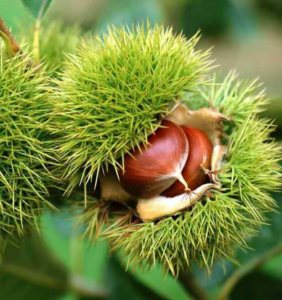
Alpi Vivai, a Borgo San Dalmazzo (CN): a family-run nursery, it has been producing grafted, bare root and potted chestnut plants for 30 years; more than 30 varieties are currently available along with small fruit plants (some 30 different types as well), including raspberries, blueberries, blackberries, currants and gooseberries; there are also about 100 varieties of potted fruit plants on sale.
Distances to other nurseries: 32,3 miles to Colla Nursery – 16,7 miles to Jshandhoor Nursery – 34,8 miles to Denis Botanic Collection – 37,2 miles to ll Bolfone.

Denis Botanic Collection, in Dogliani (CN): the nursery of the young Dennis Barroero is aimed at safeguarding rare and unique plants: always sought, reproduced and cultivated with passion and dedication. There are, for instance, yellow raspberries and red gooseberries, Siberian blueberries, pink blueberries, and then elderberries, the strawberry trees, pomegranates, Akebia quinate, common guava, Nanking cherries, Barbados cherries, Jamaican peppers, soap plants, pink apples, sea buckthorn, jujube, strawberry trees, Chinese mulberry, dogwood, chokeberries, mountain bananas, pecan nuts, snowy mespilus, bee-bee trees, and… the sausage trees!
Distances to other nurseries: 9,3 miles to Il Bolfone – 34 miles to Colla Nursery – 31,7 miles to Jshandhoor Nursery – 34,8 miles to Alpi Vivai.

Az. Agr Il Bolfone, in Cherasco (CN): This nursery offers a botanical collection of rosemary (49 varieties). Belonging to the Lamiaceae family, rosemary has only one species (Rosmarinus officinalis) but many varieties, which can be distinguished from each other by the bearing, the flower colour and the leaf size. Rosemary can also be grown in pots or on poor and stony soils; it doesn’t need water since its powerful roots sink deep into the soil searching for moisture.
Distances to other nurseries: 26,7 miles to Colla Nursery – 28 miles to Jshandhoor Nursery – 37,2 miles to Alpi Vivai – 9,3 miles to Denis Botanic Collection
From here, you’ll be able to start another itinerary: DISCOVERING NURSERIES: MONFERRATO, FROM ASTI TO ALESSANDRIA (PIEDMONT/7), reaching Fiorella Gilli Nursery.
Parks
Here’s a little selection of the nature parks in this area; you’ll find more of them listed on:
www.luoghi.italianbotanicaltrips.com/piemonte/parchi naturali riserve passeggiate
Its particular position, with a climate that is affected by the nearby Mediterranean Sea, has allowed the development of particularly rich flora and fauna. Another important feature of this area is the karstic phenomena, mainly found on the Marguareis-Mongioie Massif: with more than 93 miles of caves, many of which still unexplored, it represents a real sanctuary for speleology scholars and enthusiasts.

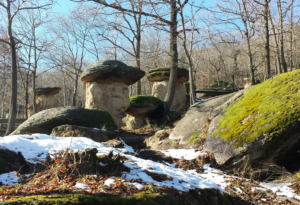
Ciciu del Villar Natural Reserve , Villar San Costanzo (CN): “Ciciu” are dolmen-like natural structures which resemble a mushroom: they’re the result of erosion and tectonic activities over the centuries. Located at the foot of the hills in the province of Cuneo, between Dronero and Busca, and at the foot of Mount San Bernardo (between 650 and 950 meters above sea level), they are part of a larger natural area, specifically created to preserve them.
In total, there are 479 “erosion columns”, with different heights ranging from half a meter to 10 meters.
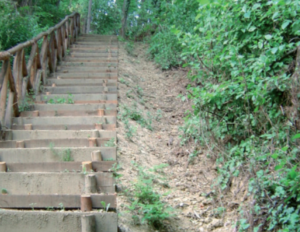
This post is also available in: Italian


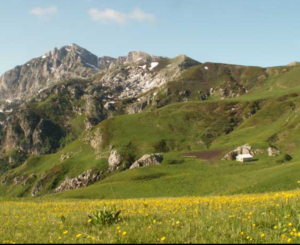
Leave a Reply